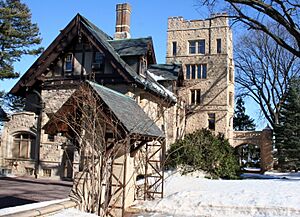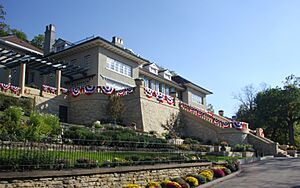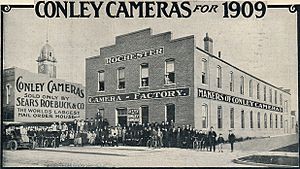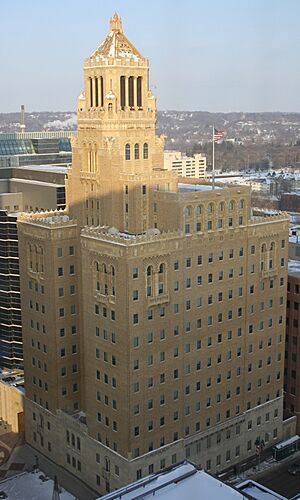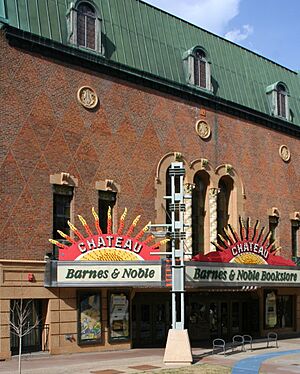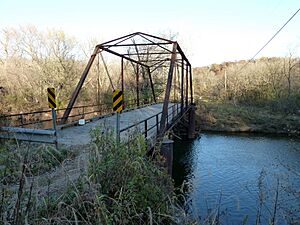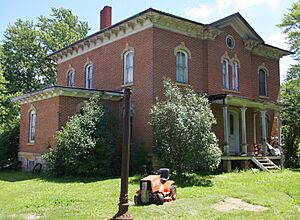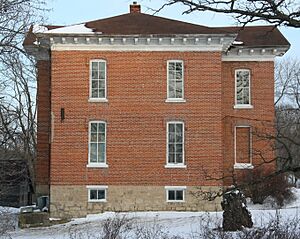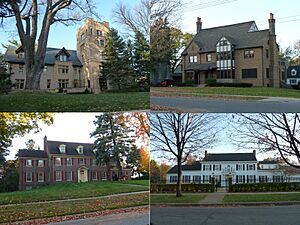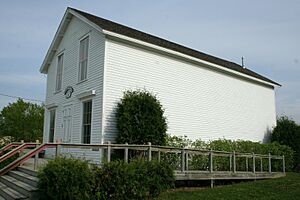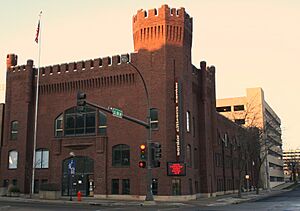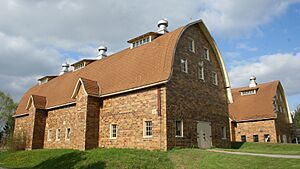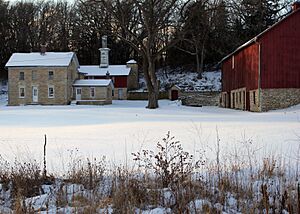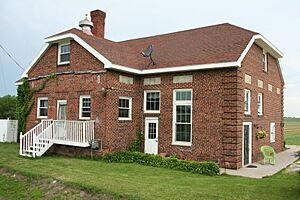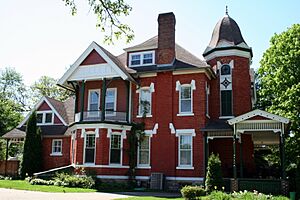National Register of Historic Places listings in Olmsted County, Minnesota facts for kids
Have you ever wondered about the old buildings and places around you? Some of them are so special that they are listed on the National Register of Historic Places. This is like a special list kept by the United States government. It includes buildings, sites, and objects that are important to American history, architecture, archaeology, engineering, or culture. When a place is on this list, it means it's worth saving and protecting for future generations.
In Olmsted County, Minnesota, there are 25 places on this important list. One of them is even a "National Historic Landmark," which is an even higher honor! Many of these historic spots are connected to the famous Mayo Clinic, a very important hospital and medical research center that started way back in 1889. Let's explore some of these amazing places!
Contents
Historic Places in Olmsted County
Avalon Hotel: A Place for Travelers
The Avalon Hotel in Rochester was built in 1919. It was first a special place for Jewish travelers. Later, in 1944, it became one of the few businesses in Rochester owned by and serving African Americans. This was before the time when everyone was treated equally, so it was a very important spot. Today, it's a music store called Avalon Music.
Homes of Mayo Clinic Founders
The Mayo Clinic was started by some very important doctors. Their homes are now historic places!
- The Dr. Donald C. Balfour House was built in 1910. Dr. Donald Balfour was one of the people who helped make the Mayo Clinic what it is today.
- The Dr. William J. Mayo House is a large stone house built in 1916. It's designed in a style called "Tudor Revival." This was the home of Dr. William James Mayo, another co-founder of the Mayo Clinic. It's also known as the Mayo Foundation House.
- The Mayowood Historic District is a large estate that belonged to Dr. Charles Horace Mayo, another Mayo Clinic co-founder. It includes his big mansion built in 1911, plus a lodge, a farm, and greenhouses built between 1908 and the 1920s. It's like a whole historic village!
- The Henry S. Plummer House was built in 1924. It's another beautiful "Tudor Revival" mansion. This was the home of Dr. Henry Stanley Plummer, who also helped build the Mayo Clinic. Today, it's owned by the city and used as an art center and for events.
Important Mayo Clinic Buildings
The Mayo Clinic itself has some very historic buildings:
- The Maass and McAndrew Company Building (also called the Conley-Maass Building) was home to a company that worked from 1909 to 1929. They were very important because they designed and built much of the special equipment and facilities that helped the Mayo Clinic become famous across the country.
- The Mayo Clinic Building, also known as the Plummer Building, is a "National Historic Landmark." This means it's super important! Built in 1928, it was the main office for the Mayo Clinic.
Other Interesting Buildings and Structures
Olmsted County has many other cool historic places:
- The Benike Family Barn near Elgin is a historic barn that tells a story about farming in the area.
- The John G. Bush House in Dover was built around 1877. It's a brick house designed in the "Italianate" style, which was popular back then. It belonged to a successful merchant.
- The Chateau Dodge Theatre in Rochester was built in 1927. It's an "Exotic Revival" style theater, which means it has unique and interesting designs. It was an "atmospheric theatre," designed to make you feel like you were outdoors under the stars!
- The Coan House in Eyota was built around 1888. It's a brick house in the "Eastlake Movement" style, known for its fancy wooden details.
- The Eyota Farmers Cooperative Creamery Association building in Eyota was built in 1924. It's a brick creamery, which is a place where milk and cream were processed. It was designed for a dairy cooperative, meaning local farmers worked together.
- The Frank's Ford Bridge near Oronoco was built in 1895. It's a "through truss bridge" that crosses the South Branch of the Zumbro River. It was built by a famous company called the Chicago Bridge & Iron Company.
- The Christoph Krause Farmstead near Dover includes a farmhouse from the 1870s. It's a brick house in the "Italianate" style, showing how farms looked long ago.
- The Oronoco School was built in 1875 in Oronoco. It's a brick schoolhouse also in the "Italianate" style. Imagine going to school here over 100 years ago!
- Pill Hill Residential Historic District in Rochester is a neighborhood from the early 1900s. Many Mayo Clinic doctors lived here, which is why it's called "Pill Hill"!
- The Pleasant Grove Masonic Lodge near Stewartville was built in 1868. It's the oldest Masonic Lodge in Minnesota that has been used continuously since it was built.
- The Rochester Armory in Rochester was built in 1915. It's a brick building in the "Romanesque Revival" style. It was used by the Minnesota National Guard, a part of the military.
- The Rochester Public Library building was built in 1937. It's designed in the "Jacobean Revival" style and made from a special stone called Kasota limestone. It was built during a time when the government helped create jobs through projects like this. Today, it's the Mitchell Student Center for the Mayo Medical School.
- The St. Mary's Hospital Dairy Farmstead is east of Rochester. This dairy farm was built in 1923 to provide fresh, pasteurized milk to St. Mary's Hospital.
- The George Stoppel Farmstead includes a limestone house, barn, and smokehouse built in 1861. It shows what a farm looked like in the mid-1800s.
- The Toogood Barns are stone barns built around 1870. They belonged to a farmer named William F. Toogood.
- The Viola Cooperative Creamery in Viola was built in 1924. Like the one in Eyota, it was a brick creamery designed for a dairy cooperative.
- The Milo White House in Chatfield was built in 1883. It's a brick house in the "Queen Anne" style, known for its unique shapes and decorations. It was the home of Milo White, who was a U.S. Representative.
- The Timothy A. Whiting House in Rochester was built in 1875. It's a wooden house in the "Italianate" style. It belonged to a well-known grain merchant. Today, it's a museum called the Heritage House.
Images for kids




